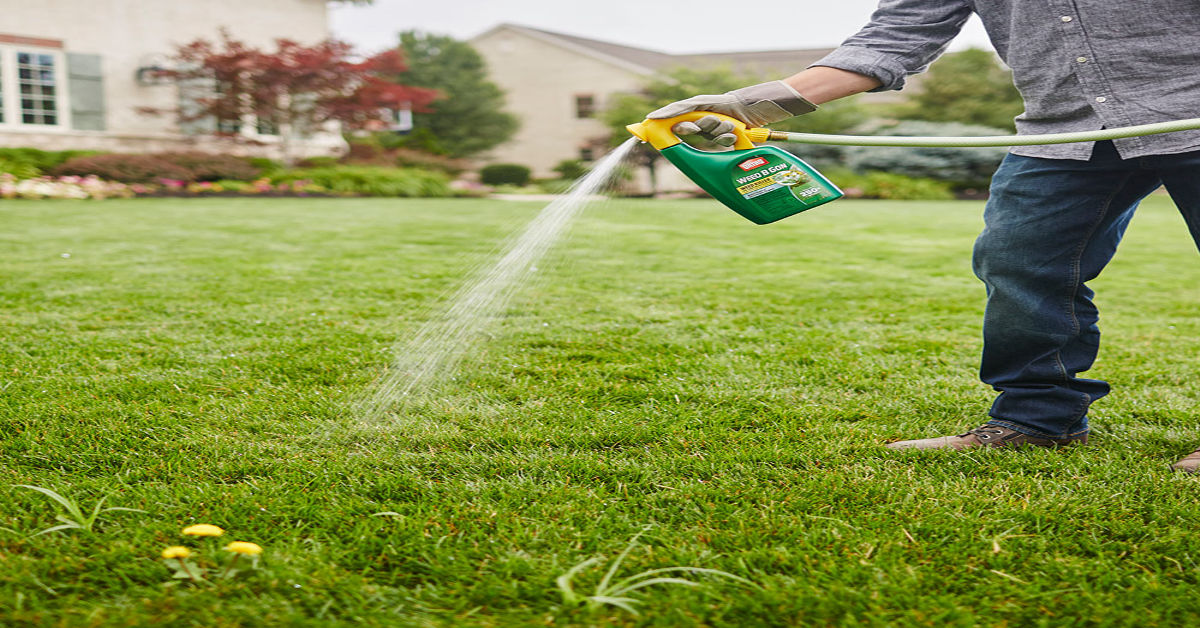Weeds are the relentless invaders of every garden and lawn—unwanted guests that compete with your plants, spoil the aesthetics, and never seem to give up. While most people turn to weed killers for a quick fix, many conventional options come with a hidden cost harmful chemicals that pose risks to pets, children, and even the environment. That’s where Spruce Weed Killer steps in, offering a modern, eco-friendly alternative. Marketed as safe for use around both humans and animals, it’s quickly becoming the go-to solution for those who want a greener way to stay weed-free without compromising on safety or effectiveness.
But safety claims alone aren’t enough—it’s the performance that truly matters. Is Spruce just a feel-good option, or does it really deliver? With a formula rooted in plant-based ingredients and bio-safe technology, Spruce aims to strike the perfect balance between gentle and powerful. This article dives into how it works, what it’s made of, real-world results, and whether it holds up to the challenge of stubborn weeds. If you’re looking for a weed control method that aligns with your eco-conscious values without sacrificing results, this deep dive into Spruce Weed Killer will help you decide if it deserves a spot in your garden toolkit.
What is Spruce Weed Killer?
Spruce Weed Killer is a modern herbicide designed to target unwanted vegetation while maintaining a safety profile that is suitable for families and pet owners. Unlike traditional chemical herbicides, this product is formulated with ingredients that break down more easily and pose less risk to humans, animals, and the environment. The formula has gained attention for its clean label and its growing popularity among eco-conscious consumers.
Its effectiveness lies in its ability to eliminate weeds at the root without leaving behind persistent residues. This product is especially appealing to those who want to maintain pristine lawns and gardens without compromising safety. While it works efficiently, it also fits the needs of people looking for a non-toxic, reliable weed control solution.
How Spruce Weed Killer Works ?
Spruce Weed Killer functions by breaking down the cellular structure of the weed upon contact. Once applied, the formula penetrates the weed’s foliage and begins to inhibit photosynthesis, gradually leading to plant death. The product works on a variety of weed types, including broadleaf weeds, dandelions, clover, and crabgrass. Its contact action ensures minimal impact on surrounding plants when used correctly.
Another critical factor is its selective action. While it is potent enough to kill invasive weeds, Spruce Weed Killer is designed not to harm surrounding grass or ornamental plants, provided the directions are followed accurately. This makes it a suitable option for homeowners and professional landscapers alike.
Key Ingredients in Spruce Weed Killer
The formulation of Spruce Weed Killer often features bio-based or naturally derived compounds. These ingredients are chosen not only for their efficacy but also for their safety and environmental friendliness. Although exact compositions may vary by product version, many Spruce Weed Killer variants use fatty acids, essential oils, or biodegradable surfactants.
These ingredients serve specific purposes. Fatty acids disrupt the plant cell membranes, while natural oils act as solvents to speed up the absorption process. The product is non-systemic, meaning it does not enter the soil or affect root systems of nearby plants, reducing long-term ecological impact.
| Ingredient | Function | Safety Level |
| Fatty Acids | Destroys plant cell membranes | Generally Recognized as Safe |
| Natural Surfactants | Aids in spreading and absorption | Biodegradable |
| Essential Oils | Improves efficacy and scent profile | Non-toxic to humans and pets |
Is Spruce Weed Killer Safe for Pets and Children?
One of the primary selling points of Spruce Weed Killer is its safety profile. The product is marketed as safe to use around pets and children, provided it is used according to instructions. This means avoiding application in areas where pets or kids will have immediate contact until the solution has dried completely.
Drying time is typically short, often within 30 minutes to an hour, depending on weather conditions. Once dried, the treated area poses minimal to no risk. This is a key distinction from conventional herbicides that may require longer wait times or present long-term residue hazards.
Spruce Weed Killer vs Traditional Herbicides
Traditional herbicides often contain synthetic chemicals such as glyphosate or 2,4-D, which can linger in the soil and water systems for extended periods. Spruce Weed Killer provides an alternative that focuses on contact kill mechanisms rather than systemic absorption, making it safer for long-term use in residential settings.
While synthetic herbicides may act faster or require fewer applications, they also carry more environmental and health concerns. Spruce Weed Killer, on the other hand, may require more consistent application but offers peace of mind with its non-toxic formulation.
| Feature | Spruce Weed Killer | Traditional Herbicides |
| Pet & Child Safety | High | Moderate to Low |
| Environmental Impact | Low | High |
| Speed of Action | Moderate | Fast |
| Application Frequency | More Regular | Less Frequent |
| Residue Concerns | Minimal | Significant |
Best Use Cases for Spruce Weed Killer
Spruce Weed Killer is most effective in residential lawns, garden beds, driveways, and patio cracks. It excels in small to medium-scale applications where targeted weed control is more important than large-scale agricultural use. Homeowners looking to maintain their property without risking their pets’ health find this product particularly useful.
Additionally, Spruce Weed Killer is useful in community gardens, parks, and playgrounds where conventional herbicides may not be allowed. It is also favored by those who maintain edible gardens and want to avoid chemical contamination near fruits and vegetables.
Application Methods and Techniques
Correct application ensures the effectiveness of Spruce Weed Killer. Always shake the bottle well and apply during a dry, calm day to avoid drift onto desirable plants. Coverage should be even but not excessive. Most products are available in ready-to-use spray bottles or concentrates that can be diluted with water.
For best results:
- Apply when weeds are young and actively growing
- Avoid watering or rain for 24 hours after application
- Reapply every 7 to 14 days if needed
- Use a shield or cardboard barrier for precision
Proper technique prevents wastage and ensures that nearby plants remain unaffected.
Environmental Impact of Spruce Weed Killer
Spruce Weed Killer is designed to be environmentally responsible. Its ingredients break down naturally within a short time, minimizing the risk of soil or water contamination. This stands in contrast to synthetic options that may disrupt beneficial insect populations or leach into groundwater.
Its biodegradable formula supports sustainable lawn care practices. Moreover, its packaging is often recyclable, adding another layer of eco-friendliness. Those who prioritize green living will find this product aligns with their values.
Benefits of Using Spruce Weed Killer
The product offers a range of advantages:
- Safe around pets and children
- Quick drying formula
- Environmentally friendly
- Effective on broadleaf and grassy weeds
- Minimal soil and groundwater impact
- Easy-to-use application
These benefits contribute to its growing reputation among conscious consumers. Users are often drawn to its clean-label appeal and performance that doesn’t sacrifice safety for results.
Customer Experiences and Case Studies
Many users report visible weed reduction within days of application. In suburban neighborhoods, where lawn aesthetics matter, Spruce Weed Killer has helped homeowners maintain curb appeal without resorting to harsh chemicals. One user noted its ability to manage weeds in a vegetable garden without harming the produce.
Landscaping companies also utilize Spruce Weed Killer in family-friendly environments such as schools and pet daycares. Their experience confirms the product’s efficiency when used consistently and according to guidelines. These anecdotal reports reinforce the product’s reliability in real-world conditions.
Tips for Storing and Handling Safely
Store Spruce Weed Killer in a cool, dry place away from direct sunlight. Keep the container sealed tightly when not in use. Although the product is safe, it’s still best to keep it out of reach of children and pets.
When applying, avoid direct skin contact by wearing gloves. If any contact occurs, washing with soap and water is sufficient. Never transfer the product into unmarked containers to prevent accidental misuse.
Common Myths About Spruce Weed Killer
There are a few misconceptions surrounding Spruce Weed Killer. Some believe that because it’s non-toxic, it’s less effective. However, user data and third-party tests show strong results on many common weed types. Others assume that natural products are always more expensive, but pricing remains competitive with conventional herbicides.
Another myth is that it needs to be applied daily for results. In reality, consistent weekly use is typically enough to manage most infestations. Debunking these myths helps consumers make informed decisions about sustainable weed control.
How Long Does Spruce Weed Killer Take to Work?
Spruce Weed Killer typically begins to show visible results within 24 to 48 hours. Initial wilting and discoloration of leaves are common signs of effectiveness. Complete weed death may take up to a week, depending on the plant size and weather conditions.
Repeat applications may be necessary for deeply rooted weeds. However, the quick visible impact reassures users of its working capability. Patience and consistency are key to achieving long-term results.
Common Weeds Controlled by Spruce
Spruce is effective against many common annual and perennial weeds. However, it’s best used for spot treatments rather than full-lawn applications.
Weeds Commonly Controlled:
- Dandelion
- Chickweed
- Plantain
- Clover
- Crabgrass
- Thistle
- Purslane
- Spurge
It may struggle with deeply rooted or woody plants unless applied repeatedly.
Pros and Cons of Spruce Weed Killer
No product is perfect. Here’s a balanced look at the strengths and limitations.
| Pros | Cons |
| Pet and child-safe | May require multiple applications |
| Fast-acting | Not selective—can kill grass |
| Natural ingredients | Less effective on large, established weeds |
| Pleasant scent | Can be more expensive than synthetic ones |
| Biodegradable | Works best in dry, sunny weather |
Comparing Spruce With Traditional Weed Killers
Traditional options like Roundup or 2,4-D herbicides offer broad-spectrum control, but they come with environmental and health concerns. Spruce provides a safer alternative for light to moderate infestations.
| Feature | Spruce Weed Killer | Traditional Herbicides |
| Active Ingredients | Natural acids | Glyphosate, 2,4-D |
| Safety for Pets | High | Low to Moderate |
| Soil Residue | Minimal | Can persist |
| Application | Spot treat | Spot & broadcast |
| Environmental Impact | Low | High |
Cost-Effectiveness and Availability
While not the cheapest option on the market, Spruce provides good value for consumers looking for eco-friendly alternatives. It is generally sold online, with pricing ranging from $15 to $30 depending on the size and concentration.
Larger sizes or refill packs offer better cost-per-use value, especially for those dealing with frequent weed issues.
Customer Reviews and Real-World Feedback
User feedback is largely positive, particularly among pet owners and environmentally conscious consumers. Many highlight its fast action and ease of use.
Common Praise:
- Safe to use in yards with dogs
- Noticeable results in under a day
- No strong chemical smell
Common Complaints:
- May require reapplication
- Limited effect on deep-rooted weeds
- Higher price point
Environmental Impact
Spruce aligns well with sustainable gardening practices. The ingredients are plant-based, meaning they break down naturally in the environment and do not leach into groundwater. This makes it suitable for use near vegetable gardens or pollinator zones when applied with care.
Still, users should avoid overuse or indiscriminate spraying to preserve beneficial soil microbes.
Maintenance Tips After Weed Control
After successfully removing weeds, maintaining a healthy lawn can prevent regrowth. Tips include:
- Mow regularly at proper height
- Water deeply but infrequently
- Overseed thin spots
- Apply organic mulch around garden beds
Keeping your yard healthy reduces the space for weeds to return.
DIY vs. Commercial Weed Killers
DIY solutions like vinegar and salt sprays are often used as alternatives. While cost-effective, they can harm soil health if overused. Commercial options like Spruce offer a more balanced formula with consistent results and better safety testing.
Choosing between the two depends on the scale of the weed problem and your tolerance for maintenance.
Best Practices for Lawn Care After Use
After using Spruce, allow the area to rest for a few days. Then:
- Reseed any bare patches
- Apply compost to restore soil health
- Monitor for any signs of regrowth
Consistency is key. Most yards need regular weeding at least every season to stay pristine.
Final Thoughts and Recommendation
Spruce Weed Killer is an excellent option for homeowners looking to maintain a clean lawn without compromising safety. It offers a strong combination of fast results, natural ingredients, and eco-conscious manufacturing.
While it may not match the power of chemical herbicides, its safety, ease of use, and minimal environmental impact make it a worthy addition to your lawn care arsenal. For best results, use as part of a broader lawn care strategy.
FAQs
Can I use Spruce on my vegetable garden?
Only if applied carefully and not directly on edible plants. It’s best for spot treatment nearby.
How long should I wait before letting pets outside?
Usually 1–2 hours, or until the area is completely dry.
Does it work on large infestations?
It’s best for spot treatment. For large infestations, multiple applications or professional services may be needed.
Can it kill my lawn?
Yes, if sprayed directly on grass. Use only on unwanted weeds.
Does it prevent weed regrowth?
No. It kills existing weeds but doesn’t prevent new ones from sprouting.







